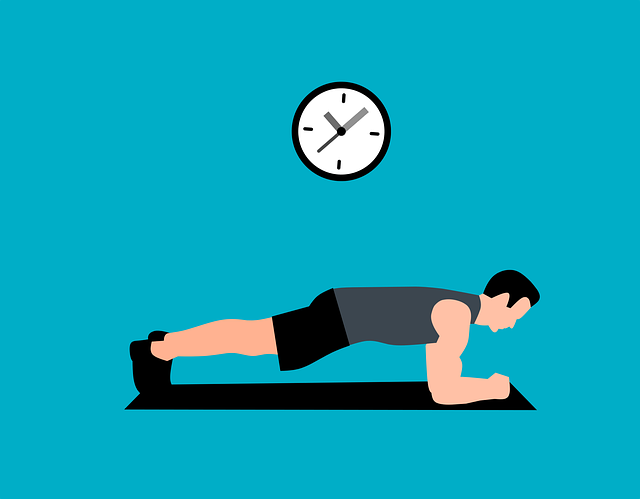Why Stability and Mobility Training Should Be a Priority

Jamal Habib

Why Stability and Mobility Training Should Be a Priority
When most people think about fitness, they focus on strength, endurance, and aesthetics—lifting heavier, running faster, or building muscle. But what many fail to realize is that stability and mobility are the foundation of all movement. Without them, your performance suffers, your risk of injury increases, and your ability to move efficiently declines.
As a NASM Certified Personal Trainer, I incorporate stability and mobility training into every workout, whether for strength training, HIIT, or corrective exercises. In this post, I’ll break down:
✅ What stability and mobility are
✅ Why they’re crucial for performance and injury prevention
✅ How to incorporate them into your training
What Are Stability and Mobility?
🦵 Stability = Control & Balance
Stability is the ability to maintain control of a joint or movement under load or during dynamic motion. It comes from core engagement, muscular endurance, and neuromuscular coordination.
💡 Example: If you wobble when standing on one leg, you lack stability.
🦶 Mobility = Range of Motion
Mobility is the ability of a joint to move freely through its full range of motion (ROM) without restriction. It’s influenced by flexibility, muscle control, and joint function.
💡 Example: If you struggle to squat deep without your heels coming off the ground, you have poor ankle mobility.
🛠 Stability = Strength & Control
🛠 Mobility = Flexibility & Movement Freedom
Both are essential for performance, movement efficiency, and injury prevention.
Why Stability and Mobility Training Should Be a Priority
1. Reduces Injury Risk
Weak stabilizing muscles or poor mobility can lead to compensations and overuse injuries. If your hips lack mobility, your lower back might compensate, increasing your risk of back pain or disc injuries.
🔹 Common Injuries Due to Poor Stability/Mobility:
❌ Knee pain (from weak glutes & tight hips)
❌ Shoulder impingement (from poor scapular control)
❌ Lower back pain (from core instability)
💡 Fix It: Incorporate mobility drills & core stability exercises before every workout.
2. Improves Strength & Performance
Lifting heavier weights or performing explosive movements requires a stable foundation. If your core can’t stabilize your spine, your deadlift form will break down. If your ankles lack mobility, your squat depth will be limited.
🔹 Key Performance Benefits:
✔️ Better squat depth → More leg strength & power
✔️ Improved overhead mobility → Stronger shoulder press
✔️ Greater hip mobility → More explosive jumps & sprints
💡 Fix It: Work on hip, ankle, and thoracic spine mobility to unlock greater strength potential.
3. Enhances Everyday Movement & Posture
Good mobility means you can move pain-free in daily life—whether that’s picking up groceries, climbing stairs, or sitting at your desk without discomfort.
🚶 Mobility Benefits in Daily Life:
✔️ Bending down without lower back pain
✔️ Reaching overhead without shoulder stiffness
✔️ Walking or running with better efficiency
💡 Fix It: Add mobility drills and stability exercises to improve postural alignment and joint function.
4. Helps You Lift Heavier Without Pain
Mobility and stability are crucial for proper biomechanics in lifting.
🚨 Common Mobility Restrictions & Their Impact on Lifting:
❌ Poor ankle mobility → Heels lift during squats = Knee pain
❌ Tight hips → Back rounds in deadlifts = Low back pain
❌ Limited thoracic mobility → Weak overhead press = Shoulder pain
💡 Fix It: Improve ankle dorsiflexion, hip mobility, and thoracic extension to lift safely and effectively.
How to Incorporate Stability & Mobility Training Into Your Routine
🔹 🛠 Pre-Workout (Dynamic Mobility Drills)
Purpose: Prepare joints & activate muscles before training.
✅ World’s Greatest Stretch – Hip & thoracic mobility
✅ Leg Swings – Dynamic hamstring & hip mobility
✅ Shoulder CARs (Controlled Articular Rotations) – Improve shoulder function
🔹 🏋️♂️ During Workouts (Stability & Control)
Purpose: Improve core & joint stability while lifting.
✅ Turkish Get-Ups – Core & shoulder stability
✅ Single-Leg Romanian Deadlifts – Hip & knee stability
✅ Pallof Press – Anti-rotation core control
🔹 🧘♂️ Post-Workout (Static Stretching & Recovery)
Purpose: Improve flexibility & prevent tightness after training.
✅ Hip Flexor Stretch – Reduces lower back tension
✅ Thoracic Spine Foam Rolling – Improves posture
✅ Calf Stretch – Enhances ankle mobility
Sample Stability & Mobility Workout Routine
Exercise | Sets | Reps/Duration | Purpose |
World’s Greatest Stretch | 2 | 30 sec/side | Hip & thoracic mobility |
Shoulder CARs | 2 | 5 reps each | Shoulder mobility |
Pallof Press | 3 | 10 reps/side | Core stability |
Single-Leg Deadlifts | 3 | 12 reps/leg | Lower-body stability |
Turkish Get-Ups | 3 | 3 reps/side | Full-body control |
Hip Flexor Stretch | 2 | 30 sec/side | Reduce tightness |
💡 Tip: Add these drills before your main workout or on active recovery days for maximum benefits.
Final Thoughts: Build a Stronger Foundation with Stability & Mobility Training
If you want to move better, lift heavier, and prevent injuries, stability and mobility training should be a priority. Whether you’re a beginner, athlete, or advanced lifter, these foundational skills will enhance every aspect of your fitness.
🚀 Key Takeaways:
✅ Stability = Strength & balance control
✅ Mobility = Range of motion & movement freedom
✅ Prioritize warm-ups, stability drills, and mobility work
✅ Train smarter, not just harder
💪 Want a custom plan to improve stability, mobility, and performance? Let’s work together to create a personalized corrective exercise program tailored to your needs!
📩 Contact me today to start training smarter!
